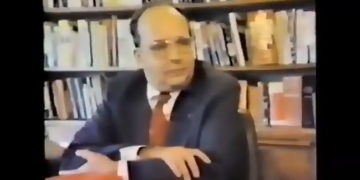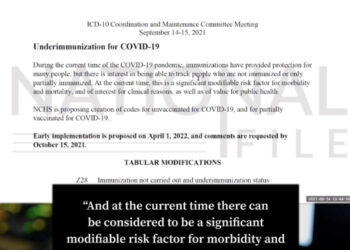Last Updated on July 22, 2020
In 1976, the Center for Disease Control made the unprecedented decision to vaccinate the United States against swine flu, fearing that it would become a pandemic in the country that would rival the Spanish Flu of 1918-1919. Later, it was established that the mass vaccination attempt was largely unnecessary, and may have proved fatal for some of the 46 million Americans who received it in the massive effort.
After Americans began dying from swine flu in the mid 1970s, then-CDC director Dr. David Sencer made the unprecedented decision to vaccinate millions Americans against the illness in a massive campaign that some say left 25 dead and “scores” more dead after being temporarily paralyzed.
After announcing his mass vaccination campaign, Sencer ordered 200 million doses of the vaccine manufactured, and President Gerald Ford promoted the vaccine by being photographed receiving it at the White House.
Less than two weeks after the program began, however, 25 Americans died after receiving the vaccine.
“Scores of others were affected by a mysterious form of progressive paralysis called Guillain-Barre syndrome,” the Washington Post noted. “Many became temporarily paralyzed, and several died.”
Sencer vehemently denied that those deaths were related to his vaccine, though contemporary experts warned that the swine flu vaccine had not been properly tested and could not be assumed safe.
Ultimately, the swine flu vaccination program began on October 1, 1976, and was suspended in December of the same year.
Among other alarming elements of the 1976 initiative is an apparent bait-and-switch pulled when Americans went to mass vaccination facilities, where doctors may not have been present, to receive their vaccines. Americans signed a waiver saying that a swine flu vaccine had been tested, but then received another vaccine that did not undergo the testing.
In an investigative special aired two years after the program ended, 60 Minutes host Mike Wallace questioned Sencer about this process.
“It was up to the CDC to come up with some kind of official consent form, giving the public all the information it needed about the swine flu shot,” explained Wallace. “This form stated that the swine flu vaccine had been tested.”
Wallace continued, “What it didn’t say is that after those tests were completed, the scientists developed another vaccine, and that was the one given to most of the 46 million who took the shot.”
https://twitter.com/zyntrax/status/1285977181999583232
When he asked Sencer whether the vaccine given to Americans was field tested, the former CDC director explained that he could not remember.
“I can’t say,” said Sencer. “I don’t know.”
“I would have to check the records, I haven’t looked at this in some time,” Sencer added.
Sencer was ultimately dismissed from his role at the CDC following the unnecessary and potentially fatal mass vaccination attempt.
When interviewed during the 2009 swine flu pandemic, Sencer acknowledged that he was wrong in the 1976 vaccination attempt, and said that if he had the information available years later, he would not have pursued vaccination at all.
He also noted that he was wrong to politicize the virus by inviting President Ford to have his photograph taken while receiving the immunization, and credited the Obama administration for avoiding the same mistake during the 2009 swine flu pandemic.
Despite being heavily criticized for the mass vaccination attempt, Sencer received a glowing obituary from The Washington Post after his death in 2011, with the publication crediting the doctor for making the “CDC a worldwide disease-fighting organization.”
The United States recently agreed to an arrangement to purchase 100 million COVID-19 vaccine doses from Pfizer for $2 billion, with the option to expand the purchase to 500 million total doses.





















